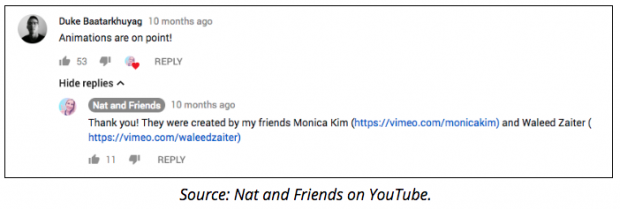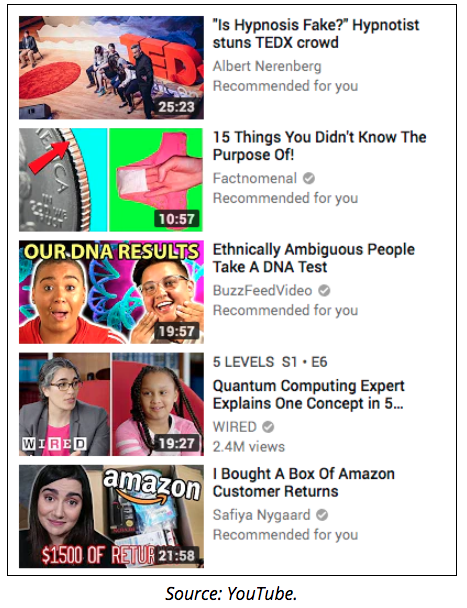When you’re hatching plans to start YouTube marketing strategy, you need to be savvy about it. There are more than 50 million content creators on Youtube that churning out videos regularly, so your own content needs to stand out.
This may sound intimidating, however, with the right strategy, it’s totally doable. By the time you’ve completed this 10-step guide to Youtube marketing strategy, you’ll have a great grasp of how to get began. We’ll be concentrating on 3 main areas:
- Making and optimizing your YouTube channel
- Understanding your viewers (and your competition) using data
- Advertising on YouTube via YouTube adverts and influencer marketing
Now, let’s jump in!
Step 1. Create a YouTube channel for business
Before you do something about Youtube marketing strategy, open a Brand Account on Google.
If you create your YouTube channel using a regular Google account, only a person—the Google Account holder—could log into that channel. By making your YouTube channel utilizing a Brand Account, multiple authorized Google Accounts could sign in simultaneously.
YouTube channels have lots of moving parts, so you’ll want at least one or two other people helping run the show.
Step 2. Learn about your viewers
Your YouTube channel for business offers you access to the Analytics tab, which has a ton of stats related to your channel. Look here for quantitative insights on your channel and your viewers’ behavior, including your view counts, average watch time, revenues generated, and interaction rate across videos.
The Analytics tab additionally contains useful data on your subscriber demographics.
Even when you think who your subscribers are, pay close attention to what you discover under the Demographics tab. This data will help you move beyond assumptions and feel confident that you are reaching suitable viewers.
Monitor the Watch Time and Demographics analytics to answer questions like:
- Where are your videos being watched, and when?
- What age are your viewers?
- What gender do your viewers most commonly identify as?
Tracking viewers analytics is a win-win. In case your assumptions about your subscribers are confirmed, that’s great: you’re now certain you’re reaching the suitable viewers.
In case your assumptions were incorrect, to adjust your content strategy to achieve the viewers you want. On the other hand, you could learn that your product is resonating with a sudden demographic—useful data for your entire marketing team.
Beyond quantitative metrics, you may also achieve qualitative info—the whys and the hows—about your viewers by reading and managing the comments on your videos. Reading the comments isn’t always fun, however, the info you find here will be invaluable for informing different aspects of your Youtube marketing strategy, both on and off YouTube.
Hot tip: the YouTube Community Page is an underrated space for finding out about your viewers. Located under the Community tab on your profile, you may interact with your subscribers directly. Publish questions or create a poll to achieve a deeper understanding of how your viewers think.
Step 3. Research your competition
Competitive analysis is important in Youtube marketing strategy if you want to pull ahead of other companies in your niche on YouTube. Luckily, lots of the information you need to identify potential opportunities is available on their channels.
Browse your competitors’ YouTube channels and take note of which videos got the most and least views. Watch these videos get a sense of what sorts of content your viewers like to view (and what they don’t) and use that to inform your own content technique.
As with your own videos, roll up your sleeves and read the comments on competing videos. Maybe your own brand has received a mention; if so, be sure that to respond to potential customers could see you’re actively engaging with your community.
Read competing for video descriptions to see what keywords they’re utilizing in their YouTube search optimization. Use similar ones to boost your ranking in YouTube’s search pages and recommended video feeds.
One final note: be sure that your competitors aren’t serving adverts on your videos! If they’re, it’s possible to block them in Google’s advert manager.
Step 4. Learn from your favorite channels
If you’re watching YouTube on your own time, ask yourself: What about this video holds my attention? What retains me coming back to my top channels?
Paying attention to your favorite YouTubers will reveal the strategies and greatest practices they follow to drive views, subscriptions, and engagement.
Even if they’re not technically within your enterprise niche, it’s possible that you could adapt your favorite YouTubers’ methods to grow your own YouTube following. Don’t be afraid to try out some of the weirder trends.
Moreover being a huge source of inspiration for your own viral videos, it’s also value remembering that YouTube is an incredible resource for self-starting learners. There are lots of YouTube channels that will straight-up tell you how to be a successful marketer, no guesswork required.
Step 5. Optimize your videos for SEO to get views
In Youtube marketing strategy, your YouTube videos need to be optimized for search if you want to get the most value out of them. However, don’t worry if your first few videos fail to achieve lots of traction. You may work on tweaking and perfecting your YouTube SEO over time.
Here are some tricks to get began:
Pick the right title (with the right keywords)
The first step to optimizing a YouTube video is to pick an appealing title containing relevant keywords (I like to use Google Adwords Keyword Planner for this).
Make sure that the title is relevant to the video topic: nobody likes clickbait. When you can, try to include exact keywords matching common search terms: it’ll get you more clicks.
YouTube video titles can contain up to 70 characters; we recommend 60 or fewer so nothing’s cut off on the search pages.
Make an interesting thumbnail
If you add a video you can select a freeze-frame to use as the thumbnail. However, we strongly recommend making your own custom thumbnail, as it’ll help your content stand out.
Write a compelling video description
Your video description needs to contain a short explanation of your video topic, as well as links to your website and social media accounts, and a list of hashtags (more on those in a minute).
Here’s a summary of the most important points:
- 5000 characters max (however you probably don’t need this many)
- Front-load necessary keywords and use them in the title and description
- Add a “contents page” of timestamps so viewers can find relevant points easily
- Link out to different playlists on your channel
- Add up to 15 hashtags
Add hashtags to your video description
Hashtags make your content more searchable on YouTube.
Pick a small number of hyper-relevant hashtags rather than an exhaustive list. When you use more than 15 hashtags, all hashtags on that video will be ignored anyway, so be selective. Oh, and keep in mind to follow YouTube’s hashtagging rules.
Add cards, bumper adverts, and watermarks to promote your channel
Cards, bumper adverts, and watermarks are clickable CTAs you could add to your YouTube videos. These are effective because they’re relatively unobtrusive, offering minimal disruptions to the viewing experience.
Here’s a quick rundown:
- Cards: small, transparent CTAs that broaden when clicked. Use these to direct viewers to your site, buy pages, or even other videos on your channel.
- Bumper adverts: six-second video adverts showing at the start or finish of a video.
- Watermarks: custom subscribes buttons visible only to non-subscribers.
Ask viewers to subscribe
Sometimes, the simplest Youtube marketing strategy to get what you want is to ask for it. There’s a reason every YouTuber ends their videos with a verbal call to “Like, share, and subscribe”—it works and takes zero effort.



